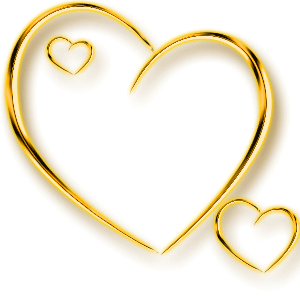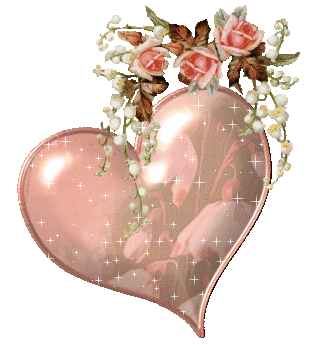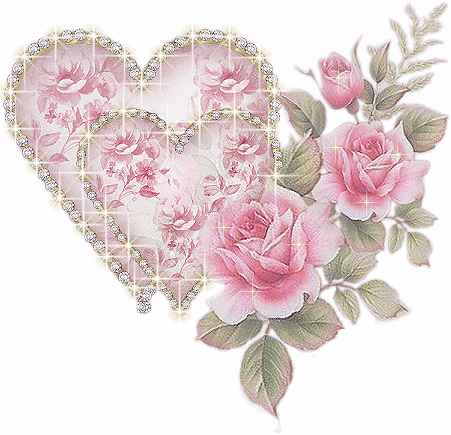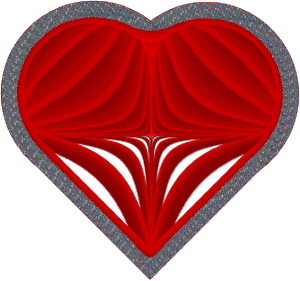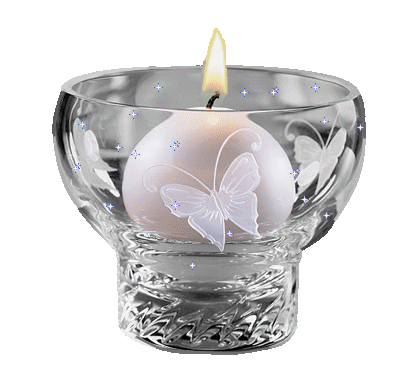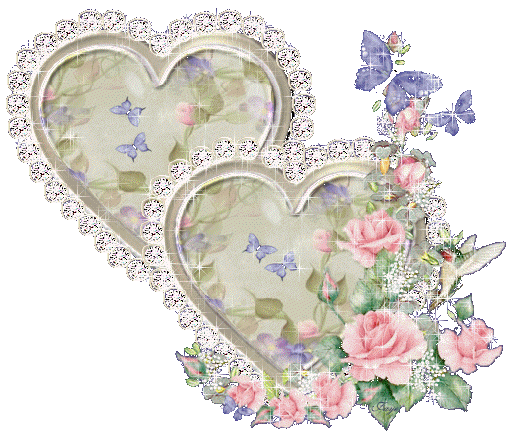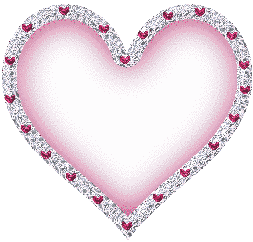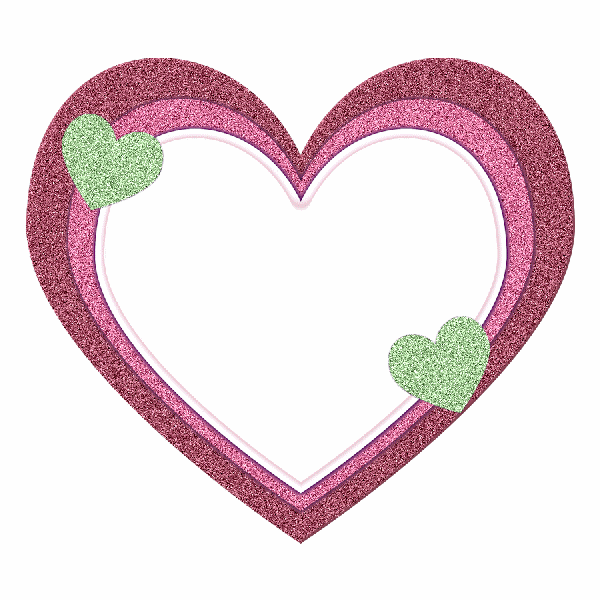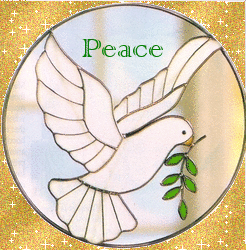Wednesday, November 26, 2014
Wednesday, November 12, 2014
Hats, hats, hats
Considering how much I adore hats on men and women, I, personally, have casually worn berets and cowboy hats. During my search for the chemo and abbey caps, I came across a stunning site about the history of hats. http://hatbox.com.
In it is "A Brief History of Hats":
~ 3200 BC
One of the first pictorial depictions of a hat appears in a Thebes tomb. A painting on the wall shows a man wearing a coolie straw hat.
70 BC - A young Danish chieftain falls into a bog to be in near perfect condition along with his pieced leather and fur cap. This is one of the earliest physical representations of hats that has been found.
50-818 AD - According to legend, St. Clement discovered felt when, as a wondering monk, he filled his sandals with carded wool to protect his feet. The moisture and pressure from walking compressed the fibers into a crude yet comfortable felt. Hatters in Ireland as well as a few other countries have celebrated him as the Patron Saint of Felt Hat Makers.
1529 AD - The word milliner, meaning a maker of hats, was first recorded in reference to the products for which Milan and the Northern Italian regions were well known (i.e. ribbons, gloves and straws). The haberdashers who imported these highly popular straws were called 'Millaners'.
1797 AD - John Hetherington stirs a riot in the streets and earns himself a £500 fine. What did he do, you ask? He wore a top jat! It's great height and shiny silk luster incited terror and panic.
1865 AD - John B. Stetson begins selling his "Boss of the Plains" hat, the same style he originally fashioned around a campfire while on a trip out West.
1875 AD - The first annual Kentucky Derby marks the largest hat fashion event in America.
January 15, 19?? - While the exact year is unknown, January 15 marks the unofficial National Hat Day. Rumor states that this "holiday" was merely started by hat enthusiasts for no other reason then to celebrate their favorite hats!
April 30, 2011 - The Royal Wedding of Prince William and Kate Middleton marks a new era of women's hats by bringing them back into the spotlight.
~~~~~~~~~~~~
While the first hat created isn't exactly known, it is likely it originated alongside other basic forms of clothing. Mankind sought protection from the elements and hats had practical implications, however they were also used purely for adornment; much like today. Hats have a long history as markers of status, occupation, and even political affiliation.
Given the significance bestowed upon hats in eras past, it seems all the more remarkable that for the first time since the Roman Empire we find ourselves in a period where it is normal to see men and women not wearing hats. However, each hat has it's own unique history and individual significance in past and present societies.
Hats have continued to thrive through the ages with their most prevalent time being between the 18th and early half of the 20th centuries. Up until the end of the 1700's, giant plumed hats like the tricorne and bicorne ruled the day. These ostentatious headpieces could be perched safely upon powdered wigs and were favored by King Louis XIV and Napoleon.
During the Revolution, as "class" definition was fought against, the top hat became a symbol of change. It was worn by men in every social category signaling the transition from the flamboyant aristocracy to the urbane sophistication of modernity.
Throughout the 1900's hats continued to dominate as a "modern" fashion choice with one of the most famous styles; the Fedora. It is an "every man's" hat - a true icon - which, prevailing in popularity for almost a century, shows no signs of going out of style.
THE TOP HAT
Peak Popularity: Late 1700's-1920's
A Top Hat has a tall, flat crown with a broad brim which is usually curled on the sides. First created by George Dunnage, a hatter from Middlesex, England, in 1793. Made infamous by John Hetherington in 1797, the first time he wore one in London, its great height and shiny silk luster incited terror and panic in the streets and earned him a £500 fine. The original top hat was made from lush beaver fur but over time transitioned to being made from silk plush. Today you can find them in a variety of materials including wool, silk and even leather. The top hat has since evolved into different styles that included the compact Coachman top hat, the tall and straight Stovepipe hat, the spring-loaded, collapsible opera hat and the Mad Hatter.
Fred Astaire in 1935's classic film, TOP HAT
THE BOWLER
Peak Popularity: Mid 1800's-1930'sA Bowler is traditionally a hard felt hat with a rounded crown and a curled brim. Created in 1849 by the London hat-makers Thomas and William Bowler. The recipient of the hat varies depending on who you talk to - some say it was for William Coke, the 1st Earl of Leicester, and others say it was made for his nephew Edward Coke. The Bowler has many names: First it was dubbed a "Coke" (pronounced "cook") or "BillyCock" after its owner. Then as a "Bowler" after its creators. In America, the hat is commonly referred to as the “Derby” after the Earl of Derby wore one on a visit to this side of the pond. In Italy the hat was known as a Bombetta, or "little bomb". In Peru it is known widely as the “Bombin”. It was popularized in modern society bu Charlie Chaplin and Laurel & Hardy. Having evolved from a working hat, the bowler came into popularity as an alternative for the elaborately tall and cumbersome top hat. While still representing respectability and properness, the bowler was a more modest hat than the top hat, and was worn by all classes of men. Prior to the invention of the fur felt western style hat, bowlers were worn by railroad workers in the American west who brought the hats with them from the East coast.
Charlie Chaplin wearing the Bowler as The Tramp
Since its inception in 1875, the Kentucky Derby has been one of the main hat fashion events in the United States. The over-the-top sunhats are designed to attract attention. Most are adorned with flamboyant embellishments including ribbons, flowers and feathers. It has been said that to find a lady without a hat on during the Kentucky Derby is almost considered a scandal, not just a mere fashion faux pas.
THE FASCINATOR
Peak Popularity: mid 1500’s-present dayA Fascinator is a headpiece purely used for decoration and tends to sit forward on the head; not covering the crown. The first fascinators can be traced back to European royalty with the first styles appearing in the Tudor era in England in the court of King Henry VIII in the middle of the 16th century and then resurfacing in 17th Century France, during the reign of Marie Antoinette. The Queen was known for wearing wigs that could be up to 2 feet high and would be adorned with feathers, flags, butterflies and even stuffed animals and miniature ships! During the reign of King George III in the late 1700s, the Duchess Georgiana Spencer of Devonshire, renowned for setting fashion trends, wore enormous Ostrich plumes in her hair and society women followed suit. Today, Fascinators are widely associated with Kate Middleton, or should we say Her Royal Highness Catherine, the Duchess of Cambridge. She is rarely seen without a fantastic and unique Fascinator.
Kate Middleton wearing a Fascinator
THE CLOCHE
Peak Popularity: 1920s-early 1930sThe Cloche was first invented by Caroline Reboux, a well known Parisian milliner, in 1908. Cloche, French for “bell”, and can simply be described as a fitted hat that covers a ladies head from just above the eyebrows to the back of the neck. Originally blocked on an actual bell, the hat was very popular in the 1920s and is often associated with Flapper girls. It has been said that women would relay messages to onlookers by adorning their Cloche with ribbons. For example, a firm knot signified that a woman was married, a loose, delicate bow signified a woman was in a relationship and unavailable, and a large, flamboyant bow signified a woman was single and ready to mingle.
Actress, Fay Wray, wearing a Cloche Hat
THE BOATER
Peak Popularity: Late 1800's-1930'sThe Boater has a perfectly flat top and brim, and straight sides to the crown with no taper. It is traditionally made with several layers of stiffly woven sennit straw which give the boater a thick but relatively lightweight wafer-like body. It may also be referred to as a Skimmer, a Katie, a Cady, a Basher, a Sommer, a Sennit Hat and a Can-Can Hat to name a few. While many have cited the creation of this hat to have been in the 1880s, there have been accounts of the first Boater originating in 1822 in the English town of Luton in Bedfordshire. As the name suggests, the Boater was commonly worn by the gondoliers in the waterways of Venice. It has been said that in the pre-World War I years, the Boater was part of the unofficial uniform of FBI agents. It also became synonymous with politicking and became the official hat of the Democratic Party The Boater also was established as one of the most potent status symbols of many private and Ivy League colleges. Students and alumni often embellished their hats with school colored ribbon bands. The boater was a favorite accessory amongst Vaudeville entertainers in from the 1880s to the 1930s as well as many Barbershop Quartets in the 1940s to present day.
Leonardo DiCaprio wearing The Boater Hat in The Great Gatsby
THE PORK PIE
Peak Popularity: Mid 1800's-1940'sA Pork Pie is a short crowned, brimmed hat with a flat top in either a round or diamond crown shape. The hat is primarily recognized as the hat of many Jazz and Blues musicians in New Orleans. Its name has a very literal meaning: the Jazz musicians commonly worked as food sellers during the day, which gave them easy access to pie trays. They would take battered old dress hats, trim off the damaged outer brim and reblock the hats over pie tins. Nowadays various versions of the porkpie are available, with very flat crowns, rounded telescope shaped crowns, diamond crowns, and brims ranging from very stingy to more formal widths.
Lester Young, American jazz tenor saxophonist, wearing The Pork Pie Hat
THE OPEN CROWN (SOFT FELT)
Peak Popularity: 1800s-early 1900sAn Open Crown is a felt hat that hat not been blocked. It is traditionally soft with a smooth dome for a crown, designed to be shaped by the wearer into various styles. There are endless possibilities as to how this hat can be worn. The open crown is also easily rolled up which makes it essential for travel.
Smooth Dome Hat molded into Fedora
THE HOMBURG
Peak Popularity: 1900-1950's
The Homburg has a deep crown with a bold center dent and an upturned brim. It was created August 29, 1882 for King Edward III. The hat was popularized by royalty and world leaders and was a favorite of Winston Churchill, Dwight Eisenhower, and King Edward VII. The Homburg was later made famous by the film The Godfather and is so recognizable from the movie, that it is often still referred to as the “Godfather”.
At 1:00, Al Pacino is wearing The Homburg Hat
THE FEDORA
Peak Popularity: 1920-1960's
The Fedora is creased down the center of the crown with bashes at the front and traditionally has a broad brim. The style actually originated as a woman's hat, with the name Fedora coming from the title character of Victorien Sardou's 1882 play, Fédora, played by Sarah Bernhardt in a fedora on stage. By the 1920's it had been adopted as a men's hat, and now is often associated with the prohibition gangster culture of the 20's and film noir of the 40's. The fedora is prevalent in modern pop culture and can be seen in numerous films and television shows (i.e. Indiana Jones, Mad Men, etc.) Michael Jackson used a black fedora as a signature accessory in the 1990's as well. A "trilby" is an updated version of a fedora. While it is nearly identical to a traditional fedora, a trillby has a shorter, “stingy” brim that is sharply rolled in the back.
Michael Jackson wearing The Fedora
THE FLAT CAP
Peak Popularity: 1400s-present in Europe; 1800's-mid 1900's in North America
The Flat Cap is a rounded cap with a small, stiff brim. It is also known as a driver, a cabby, a golf cap, an ivy cap and a paddy cap in Ireland. The Flat Cap can be traced as far back as the 14th century in Northern England, and became a firmly entrenched part of the English psyche by 1600 (due in large part to a law of the time which required wool caps for non-noble males on Sundays and holidays). They were a common sight in the 19th century on the heads of working class men throughout Britain and Ireland. Finer versions were often a part of upper-class casual country wear. When Irish and English immigrants came to the United States, they brought the flat cap with them through Ellis Island. Taxi cab drivers installed two snaps under the bill to keep their work tickets tucked under their hat.
The Peaky Blinders wore The Flat Cap
THE NEWSBOY
Peak Popularity: late 1800s-early 1900s
The Newsboy has the same overall shape and stiff peak in front as a flat cap but the body of the cap is rounder, fuller, and paneled with a button on top. Like the flat cap, it also has many names, i.e. a baker boy, a big apple, an eight panel, a Gatsby and a Lundberg Stetson. As the name suggests, many newsboys in the early 20th century wore this cap, giving it a “working class” reputation. However this is a misunderstanding - the newsboy was commonly worn by teenagers and young men of all social classes. The Newsboy became very popular with well-to-do country sportsman and was seen on the heads of many golfers.
Famous golfer, Bobby Jones, wore The Newsboy
THE GREEK FISHERMAN
Peak Popularity: late 1800s-1970s
The first Greek Fisherman was made in 1886 in Athens, Greece. It is a cap with a firm, visor brim, loose fabric crown and traditionally, a braid between the visor and the crown. The Greek Fisherman is most commonly associated with seamen, hence the name, and is still a staple of many maritime military groups. John Lennon made the Greek Fisherman an extremely popular hat in the 1960s - so much so that it can also be referred to as the “John Lennon hat”.
Bob Dylan wearing The Greek Fisherman
THE PANAMA
Peak Popularity: 1800's-1960'sThe Panama hat is known and named for it's point of export, rather than it's point of origin. All genuine Panama hats are hand-woven in Ecuador using toquilla straw. They can be traced back to the 16th century where the Incas were the first to weave hats using the the paja toquilla. When Francisco Pizarro and his Spanish conquistadors arrived in Ecuador in 1526 many of the inhabitants of the coastal areas were wearing headwear made of woven straw. In Ecuador they are called sombreros de paja toquilla, or “hats of toquilla straw”. The hat bodies are meticulously hand-woven, refined, edged, smoothed and bleached by Ecuadorian artisans in situ before travelling to hatters all over the world who block and trim the them into familiar styles. Panama hats predominantly originate in two main cities in Ecuador: Montecristi, a coastal city in Manabi, and Cuenca, a city in the Andes Mountains. It has been said that “better hats come from Montecristi but more hats come from Cuenca”. While the topic of panama hat quality is heavily disputed, it has become widely believed that the true test of quality lies in the number of weaves per square inch. Fewer than 100 is considered to be of lower quality while some of the finest Panama hats can have 1600-2500 weaves per square inch; resembling woven linen.
THE MILAN STRAW
Peak Popularity: 1800s-1960's
Milan Straw hats are hats crafted in a "sewn-braid" method. Milan Straw is a variety of wheat straw which is braided into long flat braids, sewn together in a spiral from the top of the hat to the brim. These braids often are made with gaps in them to produce a lightweight, ventilated hat body. Milan (pronounced MY-len, not like the city in Italy) originated in Italy but now is produced from a village in China. They tend to be heavier than Panama hats, but are thicker and sturdier and offer more options in terms of colors and styles.
THE SOMBRERO
Many early Texan cowboys adopted the Spanish sombrero with its flat crown and wide, flat brim. Also called the poblano, these hats came from Spain.
The Mexican variation of the sombrero added an even wider brim and a high, conical crown. These are the hats worn by mariachi musicians and charros. They are too large, heavy, and unwieldy for ranch work. Both types of sombreros usually include a barboquejo or chin strap.
In the Western United States, the sombrero had a high conical or cylindrical crown with a saucer-shaped brim, highly embroidered and made of plush felt.
Sombreros are also present in Philippine history, due to the Mexican influence brought about by the Manila galleon trade. The term has been assimilated into the Tagalog language in the form of sumbrero and now refers to any hat – from actual sombreros to baseball caps.
Mariachi Vargas wearing Sombreros
THE WESTERN HAT
Peak Popularity: 1865-Present Day
While they are associated with Texas, the original Cowboy hats belong to the American West. Frontiersmen and women brought their old hats with them on their trek from the East coast, however bowlers, top hats, homburgs struggled to adapt to the harshness of the frontier. For the shop owner or businessman these hats worked fine, but for the cowboy or worker they proved insufficient protection from the elements out on the open range. As the son of an established hatter in New Jersey, John B. Stetson was well suited to meet the demands of the hardworking frontiersman. He set up shop in Philadelphia producing the hat he called the Boss of Plains. Wide brimmed, lightweight, and made from natural colored high-quality beaver fur, it quickly lived up to its name. The plain, open crown of the Boss eventually developed into a myriad of styles, from the Carlsbad crease to the Montana Peak to the Cattleman style we most commonly associate with Cowboy hats today. The wide brim has become curled and rolled up on the sides, another stylistic choice that also made the hat less likely to get blown off by wind. Stetson began manufacturing hats with these popular alterations already set in, and, much later, became a leading manufacturer of men's dress hats as well as westerns. The name "Stetson" remains synonymous with cowboy hats to this day.
The Making of A Cowboy Hat, Stetson
THE GAMBLER
The Gambler is a traditional western dress hat. The crown of a Gambler resembles a round pork pie crown, but the brim is wider than most dress hats but smaller than most cowboy hats and the edge is curled up in a tight “pencil” curl. The Gambler may be most widely recognized as the hat worn by Rhett Butler in Gone With the Wind. It’s smaller brim and lower crown make it ideal for those who look out of place in wide brimmed Cowboy hats. It also looks great on women.
Rhett Butler wearing The Gambler
THE GAUCHO
The traditional Gaucho hat is a felt hat with a wide flat brim, a shallow flat-topped crown and a wind tie. This hat was the main article of clothing used by Gauchos in the early 19th century to work on the South American ranges. The nomadic cowhands of the Argentinean grasslands were in need of a hat that would protect them from the harsh winds when out on the prairie herding cattle. The gaucho sombrero is usually black and is sometimes worn with the brim turned up against the wind to ward off the chill.
Tyrone Power as Zorro wearing The Gaucho
Labels:
Hat History
Monday, November 10, 2014
STORY HIGHLIGHTS
- Simple ways to help veterans that can make an impact
- You don't have to spend a lot of money to show gratitude for veterans
- Just saying "thank you" can go a long way
(CNN) -- Veterans Day is a day to honor and celebrate the military
veterans who have served our country, but if you don't have a veteran in your
family or even know one, the meaning of the day may be lost.
The Veterans Administration says there are 23 million living U.S. Veterans. A veteran could be your neighbor, your co-worker or the person sitting next to you on the train. They are silent heroes we may run into every day and while we may appreciate their service, many people are not quite sure exactly how to help a veteran.
Historically, Veterans Day is marked by parades, official ceremonies and events, but many Americans only know it as a day off work or school. Since the 1950s, Veterans Day has been the day to honor veterans of all wars. Here are some ideas if you want to do something more for a veteran:
1) Write a letter
Many organizations, including California-based Operation Gratitude, sponsor letter writing campaigns for veterans. It's never too late to write a letter of gratitude to a Veteran.
Instructions:
1. Please make sure your letters will fit in a standard size envelope
2. Include your own name and address in the body of the letter
3. Do not write about politics, religion, death or killing
4. Please do not use glitter
5. This is strictly a letter-writing effort to thank Veterans; please do not send any care package items for Veterans
6. All letters will be screened
7. Send multiple letters together in one large mailing envelope or box
Please send as many letters (or copies with original signature) as you would like by regular mail only to:
Thank a Veteran
c/o Penny Alfonso
1970 Rangeview Drive
Glendale, CA 91201
2) Volunteer at a VA hospital
Veterans of all wars seek health care at the nation's many VA hospitals. And more than likely, there is a VA hospital in your community.
Cathy Pratt of veterans organization Freedom is not Free says visiting a VA hospital can make a big difference for a veteran. Many of those hospitalized may not have family or anyone to visit them. Taking a couple hours every week or month to volunteer can make a huge impact on your life and a veteran's life. This would also be a great way to teach children American history by introducing them to the people who have preserved America's freedom.
If you go to the Veterans Administration website, there is a way to sign up volunteer at your local VA hospital.
3) Donate simple things
Not money, but donating small items can help make some lonely lives better. Small donations to VA Hospitals are always welcome. Many patients are on fixed incomes and unable to buy some of the things that could make their recoveries better.
Check with your local VA Hospital, but here are some items they are looking for:
• Magazines
• Coffee and cookies
• New or gently used clothing
• Telephone cards
4) Help the homeless
According to VA, a little more than a fifth of the adult homeless population has served their country. The VA has founded a National Call Center for Veterans who are homeless or at risk of becoming homeless, that provides free, 24/7 access to trained counselors. Call 1-877-4AID VET (1-877-424-3838).
The American Legion and the Veterans of Foreign Wars also have homeless programs to assist veterans and several charities are dedicated to helping wounded service members and their families. Coming home from war and returning to the workforce while dealing with the wounds of war can also be economically challenging.
If you are going to donate money to help a homeless or struggling veteran, make sure you pick a reputable charity or organization that has 501(c)(3) designation. Contact your local VFW or American Legion to find out how to make sure your money stays in your community.
5) Say thank you
This may be the simplest and maybe the most effective way to make an immediate impact for a veteran. Many veterans may feel disenfranchised and forgotten by a nation. If you see a veteran or know of one, take a moment to say thank you.
"Thank you for your service," is a simple statement that can go a long way.
Veterans have given up a lot to serve their country, and many will deal with emotional and physical wounds for the rest of their lives. Knowing that we appreciate their service and their sacrifice can help.
And don't forget about the veterans still serving. Many of our active duty military personnel have served multiple tours in Afghanistan or Iraq. If you see a person in uniform in public, say thank you -- two words that can make a big difference.
These are just five simple ways to help a veteran, but there
are hundreds more ways to make an impact.
Labels:
Veteran's Day November 2014
Monday, November 3, 2014
Going Green: The top green countries
The United States is slowly starting to embrace shades of green, but a large part of the world is far ahead.
Sources: The Huffington Post, http://www.huffingtonpost.com/2009/07/21/top-10-green-countries-ph_n_241867.html, The Richest.com, http://www.therichest.com/expensive-lifestyle/location/the-10-most-green-countries-in-the-world/
Tied for first place is Germany and Iceland.
Germany 1
In spite of its cloudy weather, Germany has more than half of the world’s solar-power generating capacity and has invested over $14 billion in green technology last year. In fact, one of its towns - Vauban – has gone almost entirely car free!
Iceland 1
Iceland is the top green destination in the world today. The country’s
breathtaking nature aside, the people of Iceland have made remarkable progress in implementing
green energy policies. For instance, geothermal is widely used to generate electricity, while
heating needs have been taken care of by use of hydrogen.
The country's main energy source is renewable energy (geothermal and hydrogen) which
accounts to over 82% of the total energy used. The country is working towards being 100% green
energy energy efficient. Above all, Iceland's policies encourage things like recycling, use of
eco fuel, use of green products, minimal driving among a host of other eco friendly measures.
Norway 2
Has the world's largest solar production plant. Also they are planning on becoming carbon neutral by 2030, not 2050 as originally expected.
Tuvalu 3
This tiny island nation of 12,000 people has promised plans to fuel its entire economy by renewable sources by 2020. Already sinking because of rising seas caused by global warming, Tuvalu hopes to replace all fossil fuels by solar and wind power.
Switzerland 4
Switzerland seems to have topped at least two environmental lists by U.S. universities to beat out 146 other countries for its green charm. Switzerland also charges for its water and waste management services and has a severe environmental tax. This leads to some of the world's lowest levels of air and water pollution.
Sweden 5
The country has said that it plans on being fossil fuel free by 2020. Sweden already primarily runs on nuclear or hydroelectric power and they use ethanol and animal waste to power automobiles. Apparently, they are also trying to develop "wave power''' which converts into four times as much energy as solar power in the same amount of time.
The country has said that it plans on being fossil fuel free by 2020. Sweden already primarily runs on nuclear or hydroelectric power and they use ethanol and animal waste to power automobiles. Apparently, they are also trying to develop "wave power''' which converts into four times as much energy as solar power in the same amount of time.
Finland 6
The forests in Finland are growing faster than they get destroyed. Plus the country has extremely high quality of air and low levels of water pollution. Finland is also among the world's largest exporters of wind-power technology.
Denmark 7
The country has the world's first profitable offshore wind park. Denmark also became independent of fossil fuel imports in 1973. Today, Denmark has the world's greatest ratio of wind power in its energy mix.
France 8
Seventy eight percent of France's energy is nuclear power reducing nitrogen oxide and other hazardous emissions by 70 percent. The French government is also ambitious of 54 million tons of saved C02 by 2010.
Australia 9
A town in Australia has banned bottle water and the federal government is giving out $300 million to fund clean energy initiatives.
Costa Rica 10
COSTA RICA: Costa Rica: The country is run by hydroelectric power in 80 percent of the country. Also, five percent of the world's biodiversity is contained in this one country and a quarter of the nation is devoted to park preservation.
Tied with Costa Rica are Colombia and Austria:
Colombia 10
At number 10 in the EPI index is Colombia, a South American country that has
made great steps in implementing green energy solutions. Reeling from the effects of deforestation, Colombia picked itself up and has made crucial steps in ensuring that it does not repeat the same environmental mistakes it did. Some of the changes that the country made in promoting environmental conservation include using bamboo for construction project instead of steel; promoting the use of eco-friendly products; fighting deforestation; and allocation of national parks to save endemic species.
Austria 10
Austria has, over the years, implemented green energy policies to great
success. The country's latest green policy involves collaborating with the Czech Republic to create eco-friendly gardens along the borderline of the two countries. Some of the floras cultivated in this noble initiative include; herbs, fruits, trees, flowers etc. No pesticides are used in the general maintenance of the garden.Cool, Clear Water, Randy Travis
Labels:
Most Green Countries
Subscribe to:
Posts (Atom)



